Plestiodon skiltonianus
—
Western Skink
Subspecies I've seen:
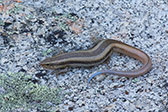
P. s. interparietalis
Coronado Skink
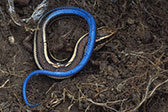
P. s. skiltonianus
Skilton’s Skink
Plestiodon skiltonianus interparietalis
—
Coronado Skink

Of the various skink species with bright blue tails as youngsters, this is the first adult I've seen that still has a blue tail, but only on the very tip. Maybe I just need to get out more?
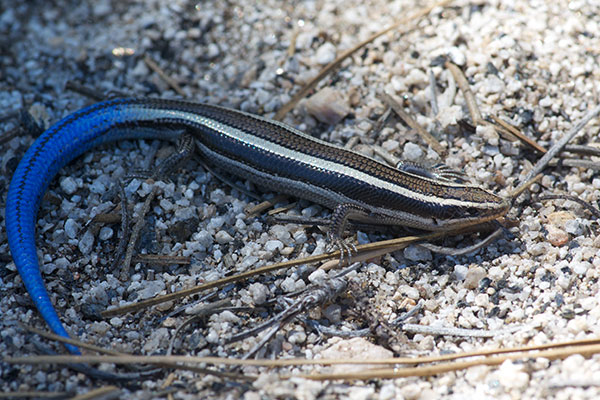
Other than the plentiful Southern Sagebrush Lizards, this was the only herp I photographed on a cool, dry day in the Sierra de San Pedro Mártir.
Plestiodon skiltonianus skiltonianus
—
Skilton’s Skink
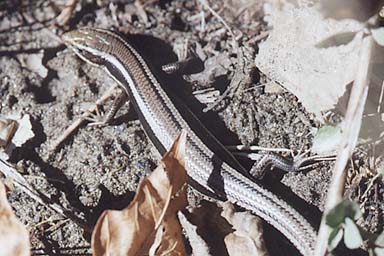
Like whiptails, these lizards are hard to photograph because they're very skittish and they rarely stop moving.
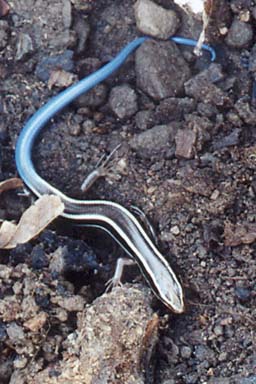
Young western skinks and some related species have amazingly bright blue tails. The general consensus is that this attracts the attention of predators towards the disposable tail and away from the significantly less disposable head and body. But some herpetologists wonder whether making yourself so conspicuous can really be a good thing predation-wise, so perhaps there's another explanation for the color.
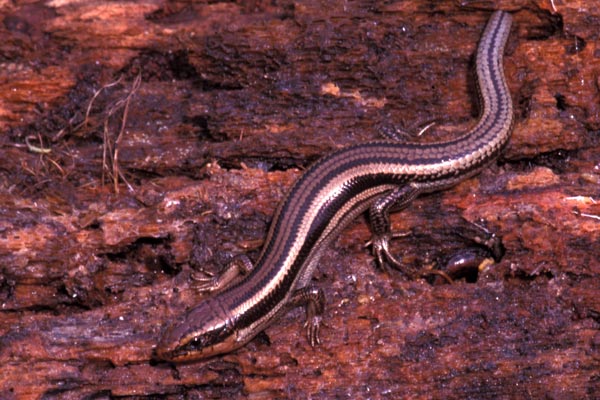
This skink has lost the last inch or so of its tail. It was slithering around in the leaf litter doing its skinky best to avoid having its picture taken. I caught it and calmed it down with gentle strokes before setting it on this log, where it remained for several minutes.
Just to the right of its back left foot you can see one coil of a slender salamander that's snuggled in a small hole in this log.

Here's another young tyke with a brilliant blue tail. This one was under a rock on a fairly chilly February day. If you look closely you can see that it has little beads of moisture on its body.
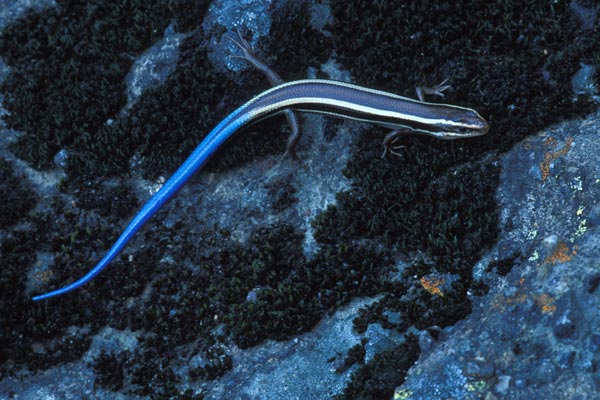
Yet another youngster with a tail of blue.
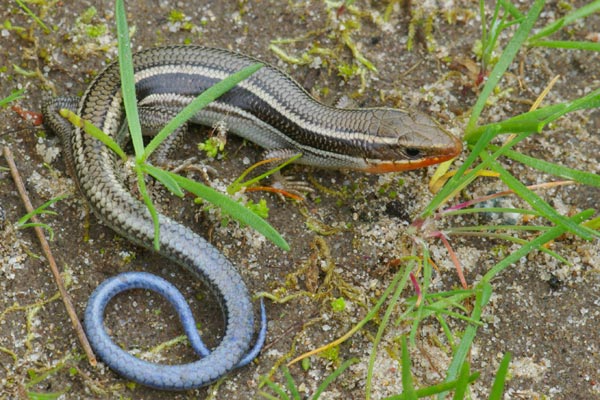
This one's a little older, and has developed some red under the chin while not yet completely losing the pretty blue tail.
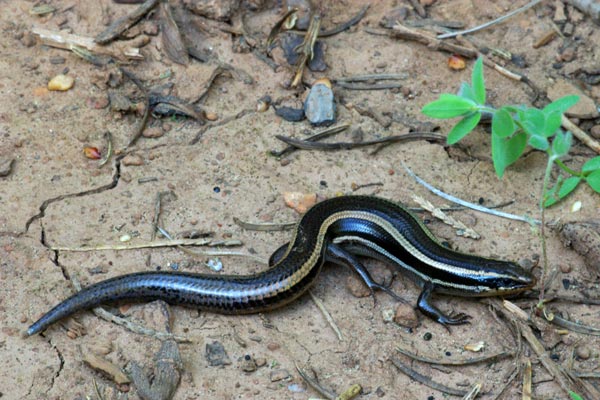
This skink and one other (perhaps its mate) were hanging out on and near the trunk of a redwood tree near a clearing. For a usually skittish species, this was a remarkably calm individual, choosing to frequently pause in near-plain sight.
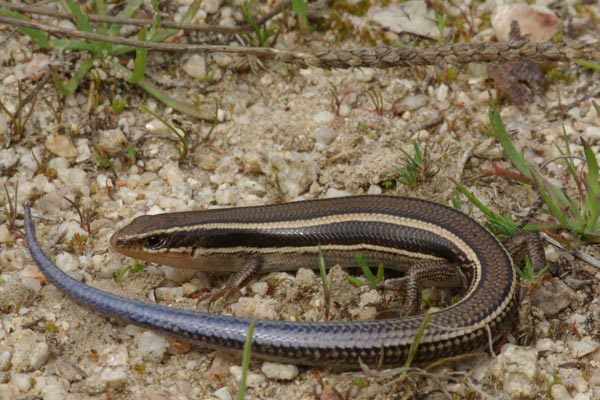
The fading blue tail indicates that this skink is transitioning into adulthood.
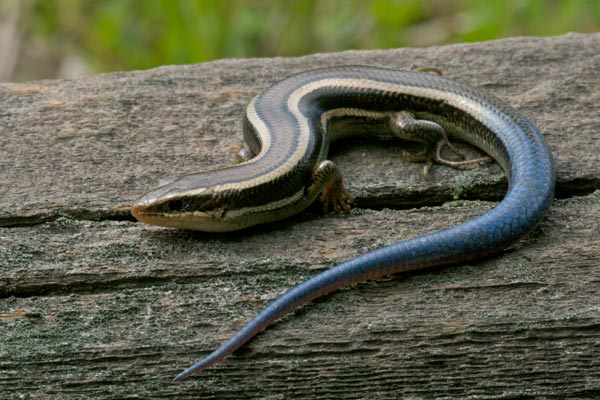
My first lizard of 2010 was basking on a board on a cool winter day.
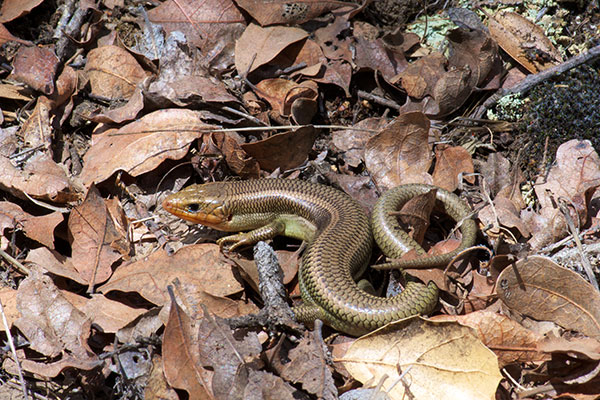
This skink was found in an area that could potentially have either Plestiodon skiltonianus or Plestiodon gilberti. Some populations are easy to identify; for instance, some but not all Plestiodon gilberti have pink tails as youngsters, whereas all Plestiodon skiltonianus have blue tails as youngsters. My friend Jackson Shedd has published a paper about the confusing similarities and differences of these two species. He helped me by identifying this adult male skink as probably P. skiltonianus, based on where it was found and some subtle appearance characteristics. Thanks Jackson!
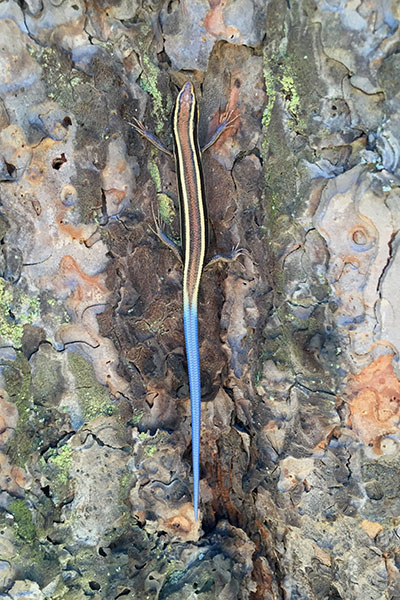
This pretty skink was actively hunting in the leaf litter on an overcast but very hot afternoon. The movement caught my eye and the bright blue tail left no doubt what sort of critter was involved. I tried to get a picture of it hunting, but it never stopped moving long enough. After a while my presence spooked it and I expected it to disappear into a hole. Instead, it climbed up the nearest tree and then held its position as I took photos from a few inches away with my iPhone.
Printed references:
- Behler, J. L., King, F. W. 1979. The Audubon Society Field Guide to North American Reptiles & Amphibians
- Crother, B. I. (ed.) 2017. Scientific and Standard English Names of Amphibians and Reptiles of North America North of Mexico, with Comments Regarding Confidence in Our Understanding, Eighth Edition
- Henson, P., Usner, D. J. 1993. The Natural History of Big Sur
- Schoenherr, A. A. 1992. A Natural History of California
- Shedd, J. D. 2005. Amphibians and Reptiles of Bidwell Park
- Smith, H. M. 1995. Handbook of Lizards: Lizards of the United States and Canada
- Smith, H. M., Brodie, E. D. Jr. 1982. Reptiles of North America: A Guide to Field Identification
- Stebbins, R. C. 2003. Peterson Field Guide to Western Reptiles and Amphibians, Third Edition
- Stoops, E. D., Wright, A. 1997. Snakes and other Reptiles of the Southwest, 4th Edition
- Wauer, R. H. 1964. Reptiles and Amphibians of Zion National Park